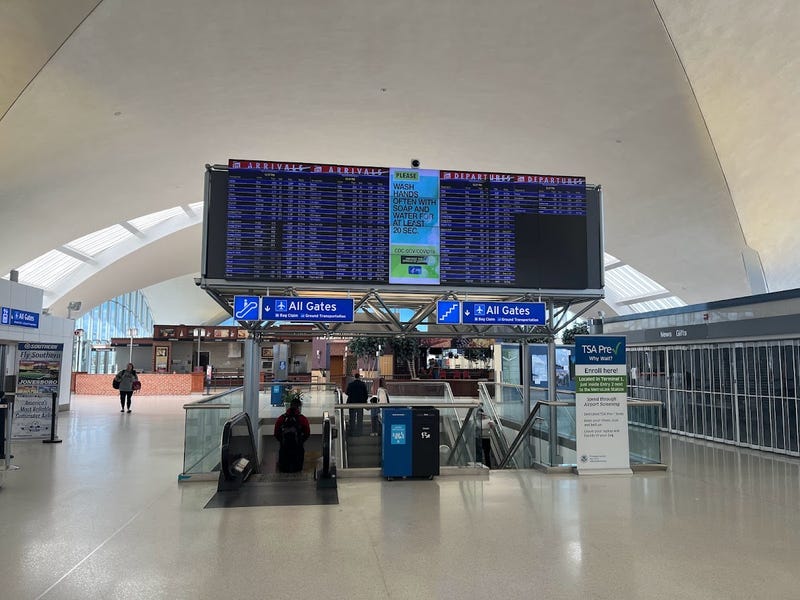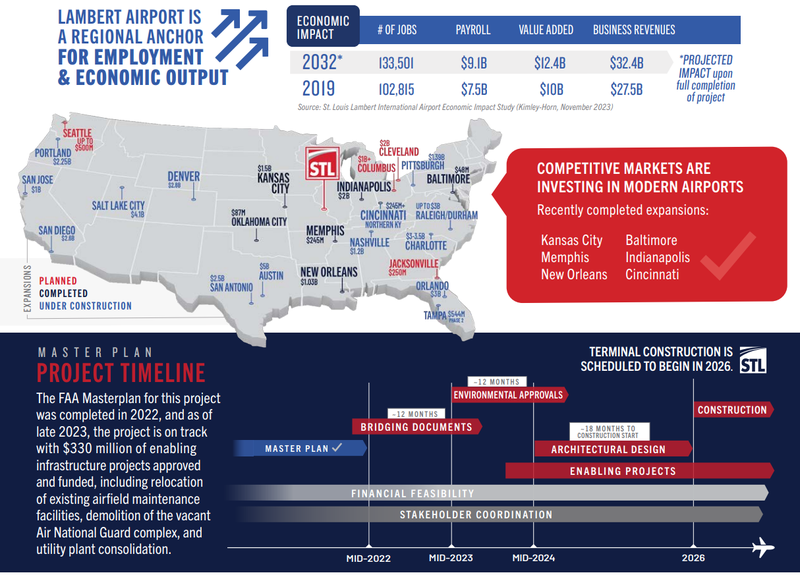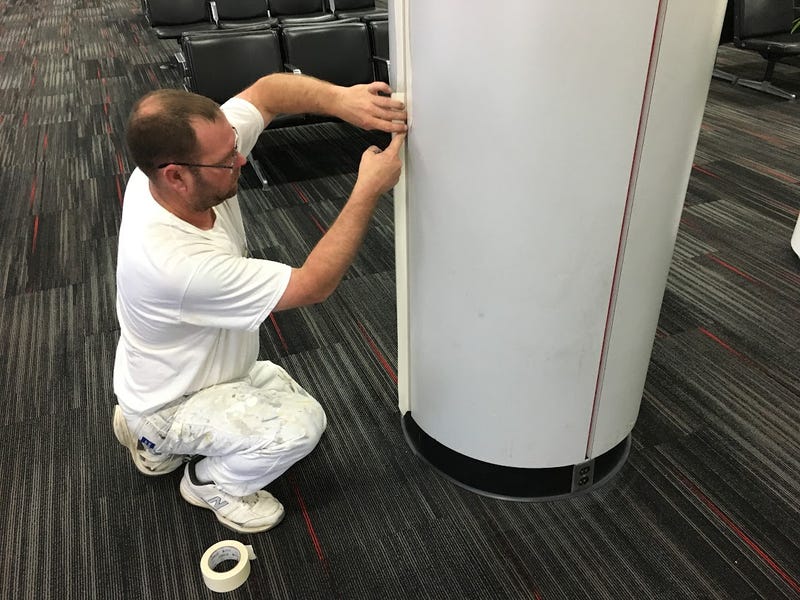
The regional business community appears to be hopping on-board with plans for a major revamp of Lambert-St. Louis International Airport.
Their boarding pass? A study, released Monday by Greater St. Louis Inc., which says the airport's economic output is a major engine, to the tune of 100,000 jobs, but could stall if the area doesn't keep up with peer cities. It could also cruise to 133,000 jobs by 2032.
"We're in the bottom 20 percent of our peers for this asset, so we have got to act with urgency," GSL CEO Jason Hall tells KMOX. "That would put us at risk with [recently retained] headquarters and extending that momentum to get more if we do not make these investments."
The business group says 80 percent of regions similar to St. Louis, like Cleveland, Columbus, Indianapolis, Kansas City, Nashville, New Orleans, Pittsburgh, Salt Lake City, and more have revamped their airports.
Some of these metros, particularly Nashville and Kansas City, are, like St. Louis, large stations for Southwest Airlines, whose hub-like behavior here has resulted in the addition of connecting flights at a rapid clip.

Audiences for the proposed $2.2 billion revamp range from airlines to frequent fliers to the CEO looking for a new home. The plan would consolidate gates and streamline the behind-the-scenes operation but also upgrade customer-facing aspects like restaurants, parking, and international gateways. St. Louis, in that regard, is about to add more flights to Canada.
Hall says: "You form an impression about the place based on the [airport] experience. Is it easy? Is it clean? Is it logical? We want people to have an amazing experience from the moment they land in St. Louis, because it's only going to convince them to stay longer."
Greater St. Louis' statement and report quotes Bayer Crop Science, Bunge, SSM Health, and other executives on the importance of air connectivity.
“Transforming our airport is a top priority for St. Louis’ business community,” David Kemper, Executive Chairman of Commerce Bancshares Inc., said.
“A thriving economy has a direct, positive impact on the health and prosperity of the entire community,” Laura Kaiser, CEO of SSM Health, said.
John Tracy, Executive Chairman of Dot Holdings, said: “Momentum is building in St. Louis. We are once again attracting businesses and are growing key industry sectors. However, the metro areas with which we are competing have made game-changing investments in their airports and upgraded the passenger experience. Transforming our airport with a world-class terminal is one of the most important steps we can take to keep our momentum going and outpace the competition in the hunt for jobs and investment."

Other work, aimed at the airfield and roadway redesign, has the potential to also benefit activities like cargo. Hall says local small businesses rely on the ability to ship their goods via air to reach larger markets while staying here.
But the biggest template for transformation might come from Boeing, which decided on the St. Louis airport grounds for an unspecified, multi-billion dollar manufacturing plant, possibly to build a new fighter for the Air Force.
Here's the potential: companies from Panasonic to Pepsico have decided to build manufacturing plants right in the shadow of Denver's airport. Here, Clayco just decided to move to the other side of the highway from Lambert.
"The good news - St. Louis is in a much stronger starting position already," Halls says about more development on and around the airport land.
Right now, the environmental review is underway. The plan would consolidate Lambert's two terminals, one of which is 70 years old, into a single, new terminal, which would incorporate the historic domes. It would be paid for by federal funds and fees on the airlines, which are deciding whether to agree.
